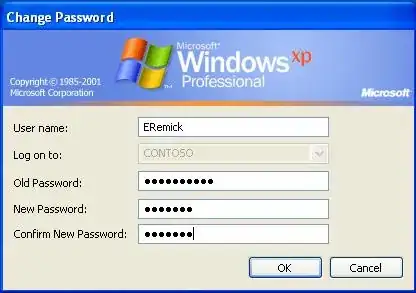I've seen plenty of documentation of how to reset a user's password by running
net user <username> * /domain
or locally
net user <username> <new_password>
But I am not domain admin for the current domain, so I am not allowed to change the password via net user <my_username> * /domain (Access is denied).
What I can do though, is to hit CTRL+ALT+DEL and click on "Change Password", where I have to re-enter my current password and give a new password:

Question: How can I script that? I want to change my password via command line. Possible?
Bonus information: I'm on a Windows XP SP3 machine.
Note: Company policy is to make the user change their password every two weeks. And you cannot use your last 24 passwords... Since I don't want to always remember a new password I just iterate through "password1"..."password24" manually and in the end I am back to my old password. It would be great to do this with a small batch instead of the manual way.
